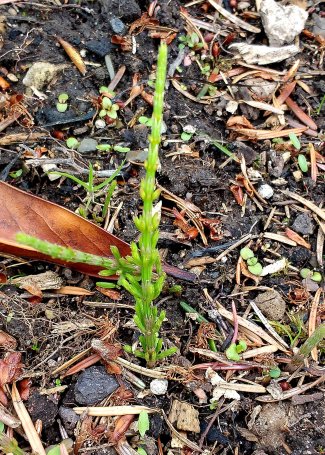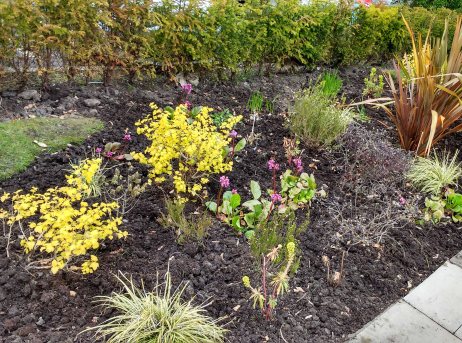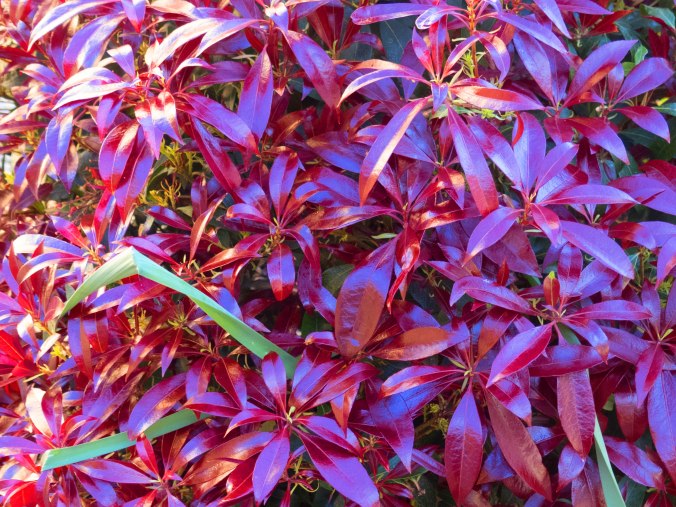I’m back! After an enthusiatic start, I ran out of steam after only 2 posts. After a long days gardening I don’t always feel like sitting down to write. But I am going to try to persevere.
Some days gardening is a joy to behold. Other days it is a battle. Today was in this second category. It was a battle… literally.
In the pink corner (hospice colours) we have Jim the Gardener (BIG CHEER). In the green corner we have “Horsetail” (BOO HISS). Let the battle commence!

Horsetail, or Equisetum Arvense to give it it’s full name, is a gardeners nightmare. But it is actually a very interesting plant. It is the sole survivor of a line of plants that go back 300 million years to the Carboniferous period – it is sometimes known as a living fossil. It’s descendants grew as tall as 30m high and gave rise to many of our coalfields – a fitting fact considering Wigan’s mining past and that the Hospice is built on an old coal mine.
Apparently it has many medicinal properties, from being a diuretic and used for the treatment of incontinence, to being used to stop bleeding. The high levels of silica in it are used to improve the absorption of calcium, which in turn strengthens connective tissues and bones. It has been used in the treatment of osteoporosis. The Chinese sometimes use it to treat hemorrhoids. For me personally, I find that rather than treating the pain, horsetail is actually the cause of pain in the backside!
It loves wet, clay soils, which abound in Wigan. The stems grow from deep, fast growing rhizomes. There are 2 types of stem. Firstly, as seen above, are the green, sterile stems, which generally grow in summer (although they seem to be growing pretty well at the hospice). Secondly, are the brown spore bearing stems which appear in spring.

Horsetail is spread by these spores, but also by growth of the underground rhizomes. Unfortunately, these rhizomes can be 7ft deep, making them very difficult to remove. When weeding, if any of the rhizome is left, it will quickly start growing again, hence it being a problem for gardeners.
Today, I was battling a fairly small flowerbed at the front of the hospice. In the past it hadn’t been looked after and had become very overgrown. Last autumn I spent a couple of days weeding it and removing the dreaded weed suppressing matting (now I know why it was there!). When I inspected the bed this morning I was greeted with a mass of horsetail. So I set to work. The battle between me and the horsetail took nearly 4 hours. I slowly and meticulously removed as much of he roots as possible. Using a fork I slowly teased them out. By the time I had finished, the bed was weed free. Round 1 to me in the pink corner!

But I am under no illusion. After 300 million years of hard training, I am sure that the horsetail will be back for more. Let’s just hope that I will be up for the challenge.





